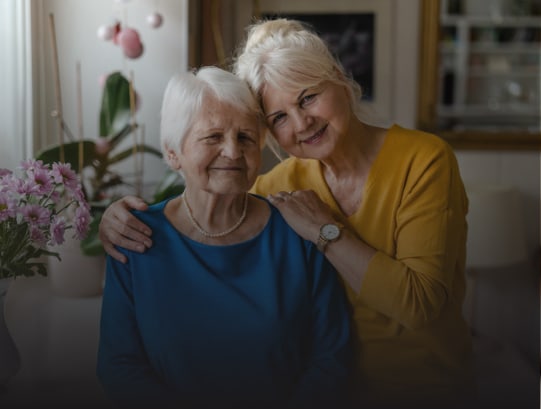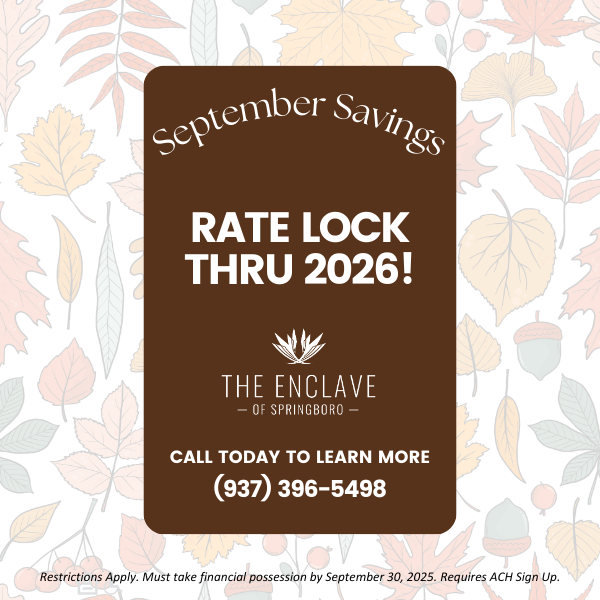Key Takeaways
- Social isolation can develop when older adults experience mobility changes, shifts in routine, or reduced daily interactions.
- Recognizing early signs—such as withdrawal from hobbies or changes in mood—can help families decide when support is needed.
- Regular social interaction supports physical health, emotional stability, and overall daily rhythm.
- Assisted living communities offer everyday opportunities to connect, from shared meals to informal conversations and scheduled activities.
- Bridge Senior Living communities report significantly lower loneliness rates than the national average, highlighting the value of a supportive social environment.
Socialization in Assisted Living
Socialization is one of the most important parts of healthy aging. However, it’s common for older adults to experience fewer daily connections as routines change. So, many families aren’t sure when this shift becomes a sign that additional support may help. Fortunately, assisted living offers a new way to help.
Assisted living communities provide structured opportunities for meaningful connections that can help combat loneliness and isolation. They can offer structure, routine, and shared spaces that help people stay engaged without feeling pressured or overwhelmed. This is a great chance to give your loved one access to all kinds of valuable social opportunities.
Why Social Isolation Happens as We Age
As people age, their daily routines often become quieter. Friends may move away, driving can feel less comfortable, and life transitions can change how often someone interacts with others. These shifts can make it harder to stay socially active, even for people who previously enjoyed a full calendar.
Common Causes of Isolation in Seniors
Isolation can develop due to:
- Changes in mobility or stamina
- Hearing or vision loss
- The loss of a spouse or close friends
- Limited transportation
- Fewer opportunities for spontaneous social interactions
Over time, these add up. It eventually can lead to all kinds of negative problems.
Signs Your Loved One May Be Feeling Isolated
Changes in behavior often signal growing isolation. So, it helps to learn the signs that a loved one is experiencing isolation.
You can recognize isolation by:
- Less interest in hobbies or conversations
- Withdrawing from social plans, even simple ones
- Noticeable changes in sleep or appetite
- Forgetfulness or difficulty staying engaged
- Mood changes such as irritability or sadness
If these sound familiar, don’t ignore them.
How Social Connection Supports Health and Well-Being
A consistent social routine does more than fill the day. It helps support a loved one’s overall outlook and daily rhythm. That’s why it’s such an important part of assisted living.
Physical Benefits
Regular interaction often leads to gentle movement. Walking to meals with a neighbor, attending a light exercise class, or simply staying more active throughout the day are all parts of life in assisted living. These shared routines also tend to encourage healthier habits, like eating at the same time or joining an extra fitness program.
Emotional and Mental Benefits
Feeling connected to others can make everyday challenges feel more manageable. Social interaction helps reduce feelings of stress or worry and creates a sense of stability, which is extremely helpful. Many residents appreciate knowing they’ll see familiar faces throughout the week, which can support mood and make each day feel more grounded and predictable.
Staying Engaged and Mentally Active
Conversations, games, and group activities gently stimulate thinking in ways that feel natural and enjoyable. Whether it’s recalling details during a trivia game, learning a new skill, or simply chatting with others, these interactions help keep the mind active.

What Assisted Living Communities Offer for Daily Connection
Even when someone prefers a quieter lifestyle, having easy access to social opportunities can make each day feel steadier and more fulfilling. Assisted living communities are designed to support this balance.
Everyday Opportunities to Socialize
Many connections form naturally during simple moments. In assisted living, residents often share a table at lunch, relax in the lounge, or step outside for fresh air with a neighbor. Because these spaces are designed to be welcoming and accessible, residents don’t have to seek out social opportunities. Instead, they happen naturally throughout the day.
Structured Activities and Community Events
Activity calendars provide a reliable rhythm to the week. Programs might include light exercise classes, art sessions, cultural events, or small group gatherings built around shared interests. These activities offer residents something to look forward to without feeling like they’re expected to participate in everything.
An Environment That Makes Connecting Easier
The physical layout and culture of an assisted living community play an important role in how connected residents feel. Comfortable seating areas, inviting dining spaces, and well-maintained spaces make it easy for people to spend time together. Together, these elements create a setting where connection feels natural rather than forced.
Social Opportunities in Assisted Living
A strong social environment doesn’t rely on big events—it’s built from everyday moments that feel natural and approachable.
Assisted living offers:
- Opportunities to meet neighbors throughout the day
- Activities designed to bring people together in familiar, accessible ways
- A welcoming atmosphere supported by approachable staff
- Shared spaces where people can gather comfortably
- Resident feedback that reflects a strong sense of connection
These elements work together to create a steady, reliable foundation for daily engagement without pushing residents beyond their comfort level.
The Benefits of Life at a Bridge Community
If you’re considering assisted living for a loved one, contact our team here at The Enclave of Springboro. As part of Bridge Senior Living, we’re happy to offer an incredible living experience to every resident here.
In the most recent survey results, only 11% of Bridge residents reported experiencing loneliness in 2025, compared to the national average of 26.6%. This number has steadily improved for three consecutive years—13% in 2024 and 14% in 2023. From a recent US News & World Report survey, 61% of respondents say their feelings of loneliness or isolation improved after moving into a senior living community. This reflects the strength of community life across Bridge communities and the opportunity we can offer your loved one.
Find the Right Assisted Living Community for Your Loved One
If you’re exploring assisted living options for a loved one, the social environment is one of the most important elements to observe. Look for a community where residents appear relaxed, engaged, and comfortable interacting with one another. Pay attention to the activity calendar, the layout of common areas, and how staff support participation.
Here at The Enclave of Springboro, connection is woven into everyday life in ways that feel natural and welcoming. Schedule a tour with us today to see how the community can support your loved one’s social well-being!











